Chalk paint is known for having a matte and dusty appearance. Many people use it on their furniture when they want to give the item a vintage or rustic appearance. Companies add a special powder to the paint to give it a unique appearance.
Is chalk paint oil-based? Chalk paint isn’t oil-based. Instead, it’s water-based, meaning it dries faster and is easier to clean than oil paints. It also comes with many benefits, including skipping prep work, and it doesn’t drip.
Overall, chalk paint is water-based and has several beneficial properties that are very useful for furniture. If you’re looking to try chalk paint, you’ll want to know more about it first. Let’s keep reading!
What Is Chalk Paint?
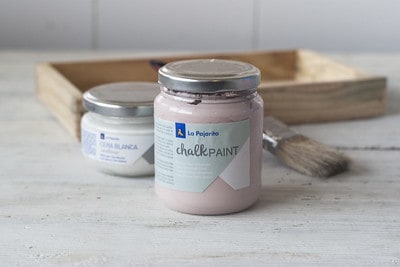
The first chalk paint came from the well-known paint brand Annie Sloan. Today, you can find chalk paint from several different brands and can even make your own DIY chalk paints. This type of paint leaves a matte finish, giving it a unique look.
It’s worth mentioning that chalk paint is different from chalkboard paint, which creates a surface that you can use chalk on. Chalk paint works best on furniture and leaves a chalky feel on them.
Most people use chalk paint when they want to add a rustic vibe to their home. You’ll find chalk-painted furniture frequently in farmhouse-themed places.
One of my favorite Chalk paint brands is Rust-Oleum. They have just about every color you can think of, and it comes in all sizes- from small 8oz bottles, to a larger 1 quart size.

Chalk paint also consists of water, pigments, and either calcium carbonate powder or plaster of Paris, which add the powder finish to the paint. It has many similarities with latex paints because both are water-based- you can expect them to be just as durable.
Is Chalk Paint Latex or Oil Based?
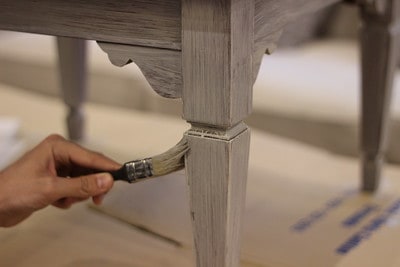
Chalk paint is water-based, just like latex paint, and the two have many similarities. Most chalk paints are latex, but some can be acrylic. Since it’s water-based, it’s also very easy to clean up with just water and a small amount of soap. When cleaning your paintbrushes, you won’t need to use mineral spirits.
Despite being called “latex,” latex paints don’t contain rubber latex. Instead, latex paints consist of limestone, water, resins (for binding), and pigments. The water acts as a thinning agent that makes the paint spread easier along surfaces. When making your chalk paints, you can control the consistency of the paint by adding more water.
Overall, latex-based paints are excellent for furniture. They provide a durable finish that shouldn’t chip or yellow with age. You can get all of these benefits with chalk paints too.
How Is Chalk Paint Different From Regular Paint?
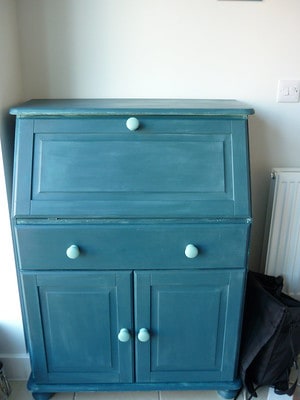
You’ll want to be aware of some differences between chalk paint and regular paint. When you use chalk paint for the first time, you’ll notice that it “feels” different than working with other furniture paints.
Chalk paints adhere to the surface extremely well and don’t require priming beforehand- you can paint directly on the furniture! If you want a simple DIY project, then chalk paint helps reduce the number of steps you need to take.
Chalk paint also has a very distinct finish. Regular paint might have a slight sheen to its surface, but chalk paints are completely matte. They look dry and chalky- a great style for vintage or farmhouse themes.

Lastly, chalk paint is a bit more expensive, but you’re paying for the added minerals that give it a chalky look. You can expect chalk paint to cost almost twice as much as latex paint in the same amount and color.
Can You Paint Oil Based Over Chalk Paint?
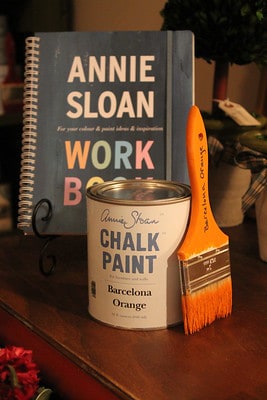
You can put oil-based paints over chalk paint, but you will need to prime the furniture’s surface first. You can sand the paint down and add a primer layer before the oil paint.
You can use a bonding primer like this one here, which will ensure the paint adheres properly.

Oil-based paint can easily go over the top of water-based paint, making it possible to paint over chalk paint. However, the chalky finish can make it harder for oil paints to stick to the surface, so you must remove some of it first. Sanding the surface also makes it more porous, allowing the oil paint to grab onto it better.
Check out my other article that shows you the best rollers to use with chalk paint. It’s very important to use the correct type of roller/brush, to ensure the paint doesn’t run or give you a streaky finish.
Overall, you can put oil paint over chalk paint, but you’ll have more trouble the other way around. If you need to put chalk paint over oil, prep the surface thoroughly first!
Is Chalk Paint Acrylic Based?
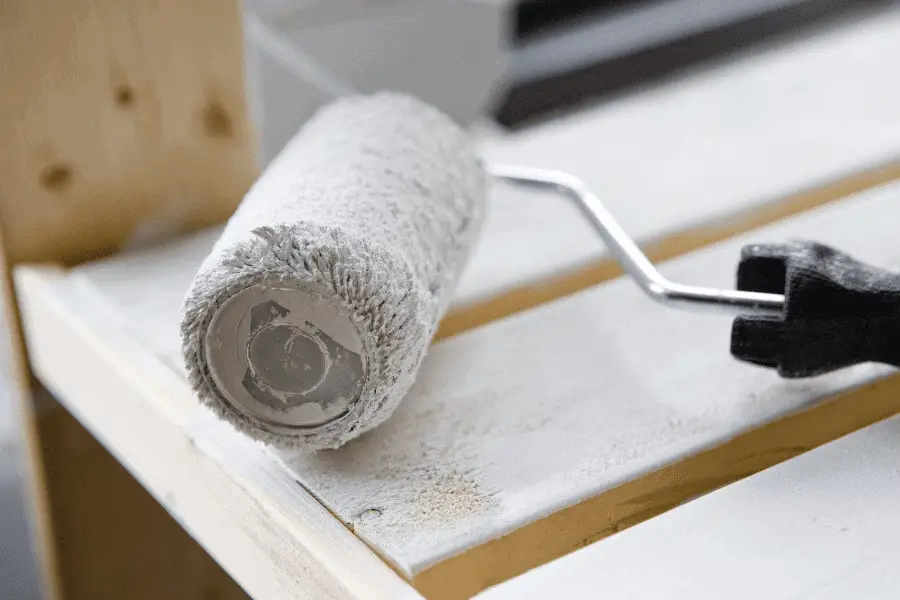
Most chalk paints that you come across will be latex, which is very different from acrylic-based paints. These two paints contain different ingredients, giving them different appearances and effects.
Essentially, chalk paint is latex paint with finely ground minerals added. The powder helps to hide brush strokes and other imperfections. It can also fill in dents and scratches on the wood, making them much harder to spot.
Acrylic paints are chemical-based, giving them a plastic, elastic-like finish. If you have furniture that expands and contracts in temperature changes, then acrylic paint can move. Latex paints aren’t as flexible and can crack if the furniture swells too much.
In short, most chalk paints that you’ll find aren’t acrylic-based- they’re latex! Latex is very durable, easy to apply and clean, and isn’t flammable. You’re sure to enjoy how simple it is to get stunning effects with chalk paint.
Does Chalk Paint Come Off With Water?

Chalk paint is very easy to wash off with water. If you drop some on the floor, don’t panic! All you need is some soapy water. Dab the spilled paint with the water, then scrub it off with a sponge or a rag. It should come right off without leaving a stain, especially if you react quickly.
After drying, chalk paint becomes water-resistant. However, that doesn’t mean that it’s completely waterproof! You’ll need to apply a waterproof seal if you want to use chalk paint on outside furniture.
You can use either Mod Podge Outdoors, Wax, or Krylon Varnish, if you want to protect your chalk paint from water and moisture.
So, wet chalk paint comes off very easily with water. You won’t have to worry much if you make a mess! Just keep a bucket of soapy water nearby while you paint.
Can You Paint Over Chalk Paint That Has Been Waxed?

You can paint over the chalk paint you waxed, depending on what kind of paint you want. Most of the time, you’ll need to remove the wax by sanding the furniture’s surface down. However, you won’t need to do that if you want to apply another coating of chalk paint.
If you want to remove the chalk paint, you can use paint solvents. Apply it to the furniture, rest for 30 minutes, and scrape it off with a paint knife. At this stage, the chalk paint should be soft enough to remove with a piece of steel wool and some soapy water.
I like to use Sunnyside Paint Thinner for all my projects. This is great for thinning oil paint, removing chalk paint, and many other uses! It’s also odorless which is a big plus, since most solvents can have harsh smell.

Final Thoughts
To summarize, chalk paint isn’t oil-based! It’s a latex paint combined with finely ground minerals, giving it a chalky texture. While Annie Sloan is the original brand, you can find plenty of alternatives today. There are even many recipes online that you can use to make your chalk paint!
In short, chalk paint comes with all the benefits of latex paint. It’s extremely durable and long-lasting, so you’re sure to get many years out of it, even when frequently using the furniture. Chalk paint is simple to use and has a stunning effect, so why not give it a shot?
Make sure to follow all my tips and recommended products to ensure your chalk painted project turns out great! Also, don’t forget to check out my other articles for all your painting Q&A’s. Happy painting!


